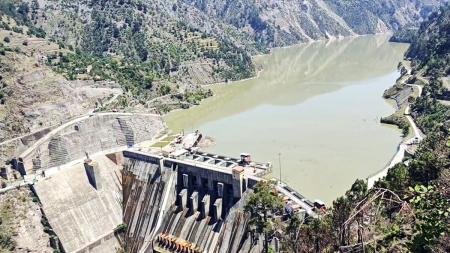India’s threat to stop the water flow of the Indus River to Pakistan is a blatant breach of the Indus Waters Treaty and an unprovoked act of state terrorism. Given the scale of devastation it would cause, it amounts to the use of water as a weapon of mass destruction (WMD). This is a matter of life and death for over 220 million people and a centuries-old ecosystem that depends on the Indus River for survival.
The Indus Waters Treaty (IWT) was signed in 1960 between Pakistan and India under the auspices of the World Bank. It granted rights to Pakistan over the western rivers (Indus, Jhelum, Chenab) and rights to India over the eastern rivers (Ravi, Beas, Sutlej). Despite three wars and decades of hostility, the treaty endured. However, in the aftermath of the Pahalgam incident in April 2025, India declared its intent to sabotage the IWT by stopping the flow of the Indus River to Pakistan. This marks a dangerous escalation that could destabilize the entire region.
The Indus, Pakistan’s largest river, flows along the entire length of the country, which has an elongated north– south geography. An estimated 150– 180 million people directly depend on Indus water for drinking, sanitation, irrigation, and livelihood. Indirectly, the entire population of over 220 million would suffer secondary effects, including inflation, food scarcity, and mass unemployment. India’s threat to halt the Indus River is an existential threat. Unlike a nuclear strike that destroys cities or affects specific regions, water stoppage impacts entire populations, long-term ecosystems, and future generations. This is a form of WMD by stealth; camouflaged as water policy rather than bombs.
The stoppage of Indus River water is the deliberate weaponization of a life source to cause economic, environmental, agricultural, and humanitarian catastrophe. By weaponizing water, India engages in actions with consequences more devastating than nuclear strikes. Over 80% of Pakistan’s irrigated agriculture depends on the Indus. Blocking its flow would trigger famine across the plains of Punjab and Sindh, mass displacement of rural populations, and the collapse of food security systems. The country could face environmental collapse, amplifying the effects of climate change. Millions of livestock and wildlife species rely on the river. Water scarcity would decimate cattle populations, threaten biodiversity, and devastate rural communities dependent on animal husbandry.
India’s actions follow a familiar pattern. The Uri (2016), Pulwama (2019), and Pahalgam(2025) incidents were used as false flags to build domestic political support. These staged events served as pretexts for anti-Pakistan aggression and diverted international attention from human rights violations in Indian-occupied Kashmir. These operations, orchestrated by Indian intelligence agencies, aim to manufacture justification for overt acts of war; including water terrorism.
The Modi regime has strategically used anti-Pakistan rhetoric and the Rashtriya Swayamsevak Sangh (RSS) ultra-nationalist narrative to win elections. By weaponizing water, it exploits Hindu-majority sentiment among voters- at the cost of regional peace.
India’s use of water as a weapon of mass destruction may compel Pakistan to respond with equivalent or greater force, as a matter of national survival and self-defence under international law. The scale of such provocation provides just cause for Pakistan to consider all strategic options- military, economic, and diplomatic. India’s water terrorism would cross the threshold of an act of war under international law.
To prevent escalation and nuclear risk in the region, Pakistan must take the following measures:
- Pakistan must invoke mechanisms under the UN and the World Bank, exposing India’s environmental and humanitarian violations on global platforms. The international community must treat India’s water threats as crimes against humanity and intervene to prevent a water-based genocide.
- India’s repeated provocations serve to mask the atrocities it commits in Kashmir. Resolving the Kashmir issue in light of UN resolutions is the only way to ensure lasting peace in the region and end such provocations permanently.
- Pakistan must maintain credible strategic deterrence and clearly signal its red lines to prevent miscalculations.
India’s threat to stop the Indus River is an act of war; with the destructive capacity of a nuclear weapon. It is the use of water to bring death to all living beings across thousands of square kilometres. If India proceeds with such a plan, Pakistan will be left with no choice but to respond with proportional destructive power.
The world must act swiftly and decisively. If India is allowed to proceed, Pakistan’s very existence will be at stake- endangering peace and stability across the entire region.

Zia Ahmed
With over 35 years of experience in senior roles across leading national institutions, Zia Ahmed has made significant contributions to the defense, public administration, academia, engineering, and logistics sectors. He holds an MSc in Thermal Systems Engineering and has further strengthened his expertise through a range of senior management courses. His career reflects a proven track record in strategic leadership, policy execution, and institutional development.
- This author does not have any more posts.













